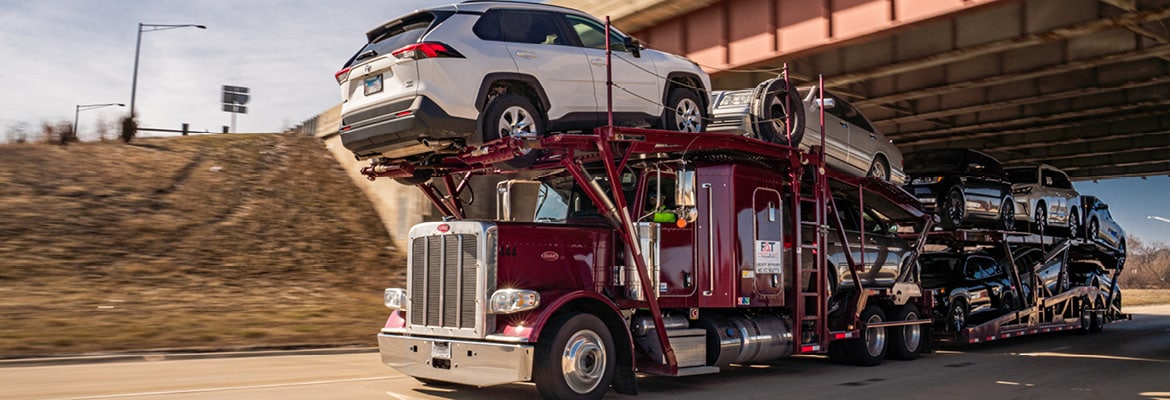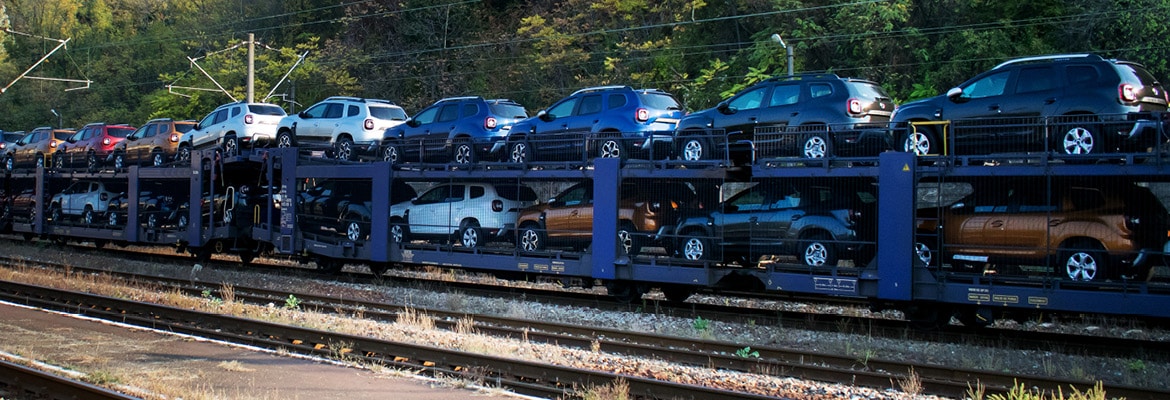Author(s)
As a car owner, your vehicle is one of your biggest investments and maybe even your most prized possession. Many car owners like to keep an eye on their vehicle’s whereabouts after handing over the keys to have it shipped across the country. After all, having visibility of your car’s location goes a long way in maintaining peace of mind while you wait for delivery.
What you might not know is that there are dozens of unseen processes to ensure your vehicle is delivered safely, efficiently, and legally. These processes determine the optimal route your vehicle will take. If you’re following your shipment closely, some of these routes might seem confusing, especially if you have limited experience with logistics. In this blog, we’ll break down some common misconceptions to help you better understand auto transport tracking and delivery.
Common misconceptions:
Auto transporters use the same navigation tools as other drivers
While GPS is a vital tool truck drivers use for navigational assistance, it’s not the same standard GPS that individuals rely on for everyday directions. Professional drivers use a premium service that factors in everything from their truck’s length, height, and weight to their fuel consumption and average speed. The system uses that information to create a specific route that is safe, efficient, and legal for the driver to navigate.
Auto transporters take the same routes as other drivers
The safest legal route for a truck driver will likely be different than the one you would take to the same destination. Not only are truck drivers limited to certain highways, but some roads and bridges also have specific weight and height limits that prevent truckers from using them.
The average car carrier is 13.5” in height. The most direct route to your destination might pass under a bridge that is only 12” high, meaning the truck would have to take a detour to avoid damaging the cargo on top. Additionally, car haulers can weigh tens of thousands of pounds before there are even any vehicles loaded onto them. Some bridges and roads can’t accommodate that much weight, forcing the driver to take an alternative route.
If you’re tracking your car shipment and notice that your driver appears to be taking a long detour or roundabout way to your destination, this is one likely reason.
Auto transporters take the shortest route to my destination
The shortest route for a car transporter could be a lot longer than the one you might see on your own GPS or navigation app. The driver will take the most efficient route to accommodate all of their deliveries while operating within the law. The route they follow will account for roads and bridges that must be avoided, while also accommodating other pickups and deliveries along the way.
For example, the car hauler transporting your vehicle might have a delivery in a city near your destination. If you’re tracking your shipment, you might wonder why the carrier is stopping in a place that doesn’t seem relevant to your delivery. They could also be picking up another car in that location, which would extend the time they spend there. Be sure to refer to your estimated delivery window as it accounts for these factors.
Auto transporters can pick up and deliver vehicles at any time
People shipping their vehicles have a wide range of availability and time constraints, and the truck drivers often need to work around these schedules. Depending on the driver’s route and their customers’ availability, the delivery timeline could be affected.
The most efficient route could involve a bit of downtime while the driver waits for their customer to become available to complete vehicle pickup or drop off before moving on to their next destination. If you see that your shipment has been stopped in the same location for a while, there are several reasons why this could be happening—logistics like loading and unloading vehicles, meeting with customers, refueling, taking mandatory breaks, and even sleeping are all part of a truck driver’s day at work.
What can I do besides GPS tracking?
Rely on Montway’s real-time vehicle shipment tracking
Montway Auto Transport offers free, real-time tracking for select shipments. If your shipment is eligible, you’ll receive a custom link to track your shipment after your order has been booked. Here you’ll be able to access shipment information quickly, eliminating the need to call drivers or customer service representatives for shipment status updates.
In addition to your vehicle location, you’ll also be able to view your carrier and driver information, estimated delivery date, and inspection documents also referred to as Bill of Lading.
Contact your broker or transporter
If you want more information on your vehicle’s whereabouts and don’t have access to the car transporter’s GPS tracking, your auto transport broker or carrier service will be available to help. If you booked your auto transport through Montway, contact one of our representatives via LiveChat or by calling 888-666-8929. They’ll be able to provide the most recent and accurate information about your vehicle’s shipment status.
Use personal tracking devices like AirTags or Tiles
Consumer tracking devices like Tiles and AirTags are great for keeping tabs on your luggage or finding your keys, and some auto transporters even recommended that customers use them to track their vehicles.
The near real-time location of an AirTag or Tile will not always align exactly with an auto transporter’s location update. This is because carriers use general milestones along their route to report locations rather than exact GPS coordinates. Keep in mind that, while generally very accurate, these tracking devices can still experience delays or interruptions when relaying location data. This is because AirTags need to connect with other IOS devices such as iPhones and iPads. Between your auto transporter’s resources and your own personal tracking device, you’ll have no trouble getting an accurate update on your vehicle’s location at any time.
Understand car shipping timelines
Before you send your car on its way, have a good understanding of how long it takes to ship a car. Knowing the total distance your car has to travel, and the average time it takes to complete the journey, will help you set realistic expectations around when your vehicle will arrive. While you’ll also receive an estimated delivery date when you book your transport, it’s important to remember that the arrival timeframe is subject to change based on changing weather conditions, road construction, or unexpected delays along the way.
Auto transport GPS tracking: FAQs
Can I track my vehicle shipment?
Yes. Montway offers a free order status webpage for select shipments. Customers will receive a unique tracking link that provides real-time location status updates for their shipment. Additionally, you can contact your broker or carrier directly for updates on your shipment status.
How much does it cost to track my car shipment?
Tracking your car shipment is free. When you choose Montway as your auto transport provider, you’ll receive a link to a dedicated order status page after your order is booked. With that link you’ll have access to real-time visibility of your order status, free of charge. You may also contact your carrier or broker directly for updates via phone, email, or LiveChat.
What does it mean if my vehicle is “in transit?”
“In transit” means your vehicle has been picked up by an auto transporter and is currently being shipped to its destination. Keep in mind that “in transit” also includes downtime while the truck driver loads and unloads vehicles or performs routine maintenance. For overseas shipments, you may see your vehicle sitting in a parking lot or loading zone, waiting to board the boat.

Top-rated auto transport
Montway arranges transport for over 250,000 vehicles annually while delivering award-winning customer service to vehicle owners in all 50 states, every day of the year. No matter what kind of vehicle needs to be shipped, from cars and motorcycles to trucks and SUVs, customers all around the country trust Montway to safely deliver their vehicles.
With nearly 20 years of experience and over 1 million satisfied customers, we’ve earned our reputation as a trailblazer in the auto transport industry. When you’re ready to get started, click for a free instant quote. Speak with a shipping advisor at 888-666-8929 or via LiveChat.







